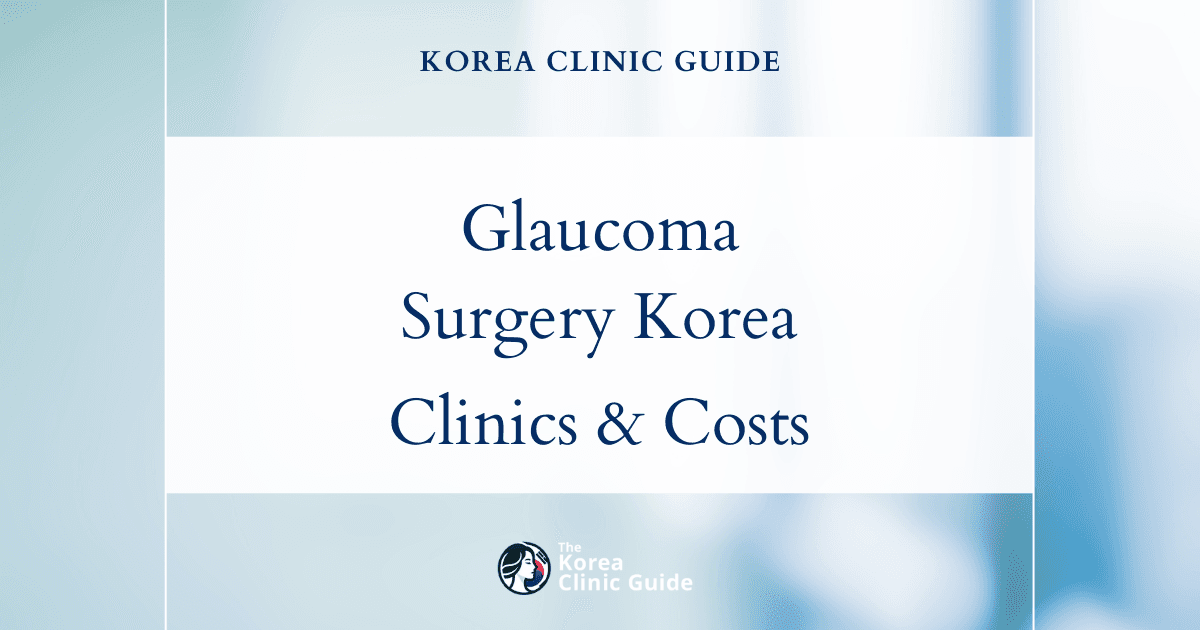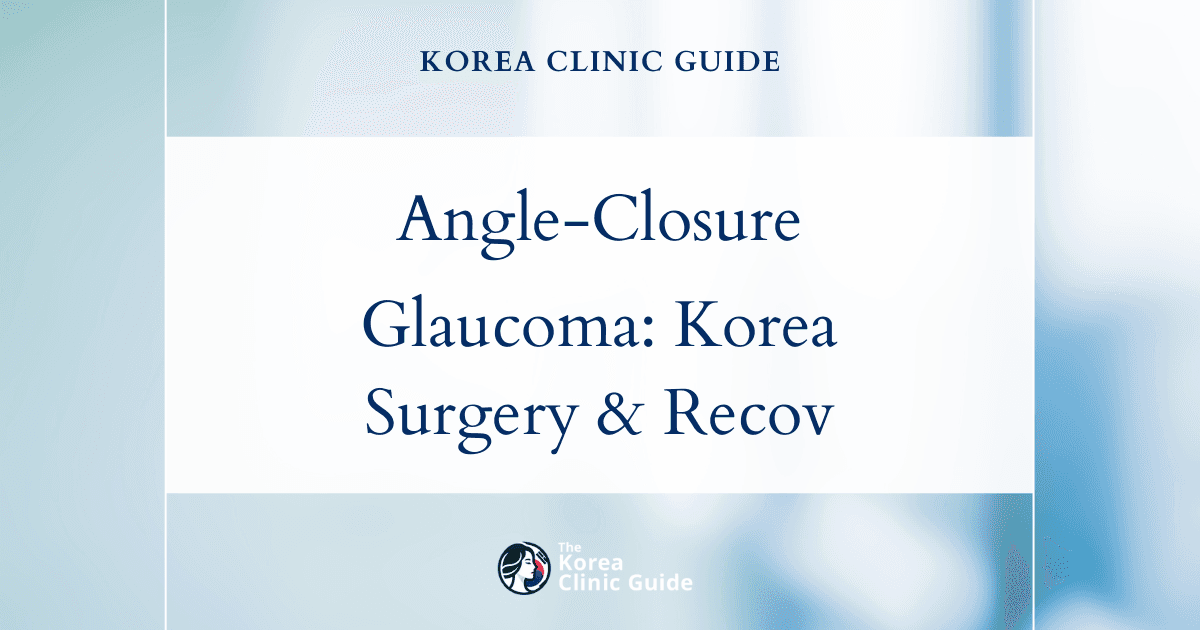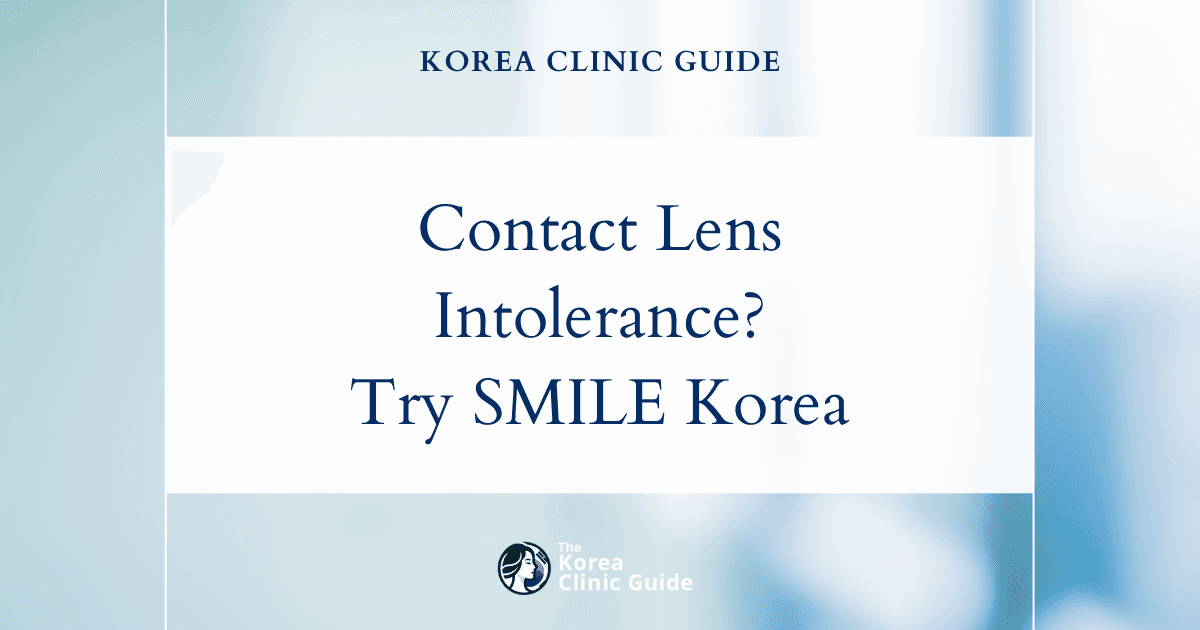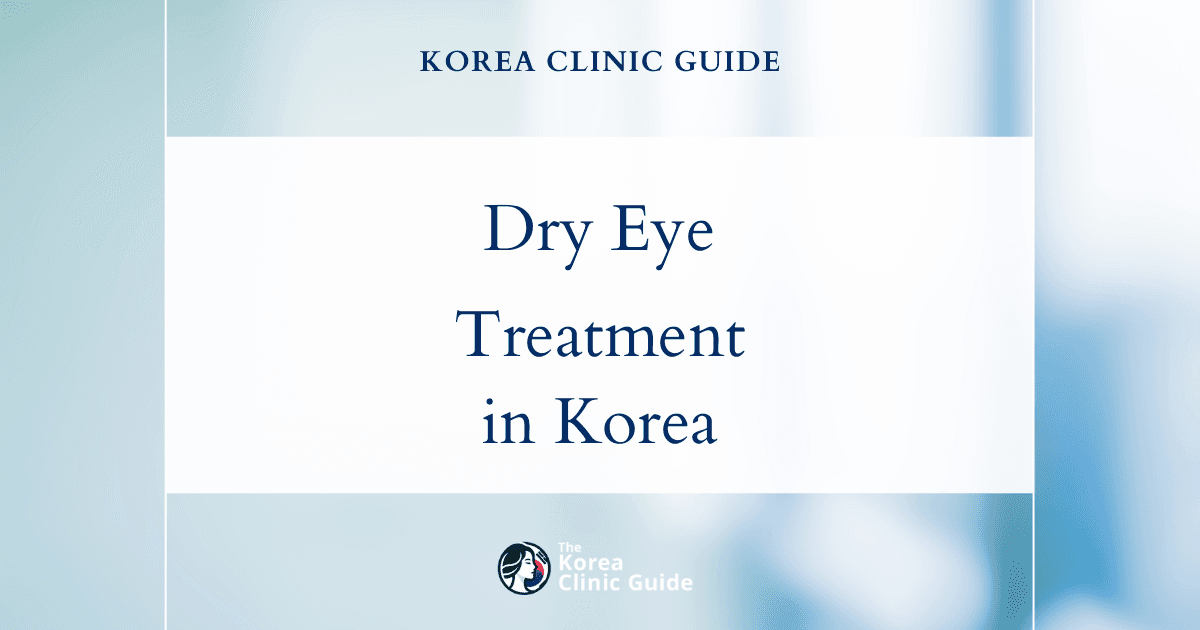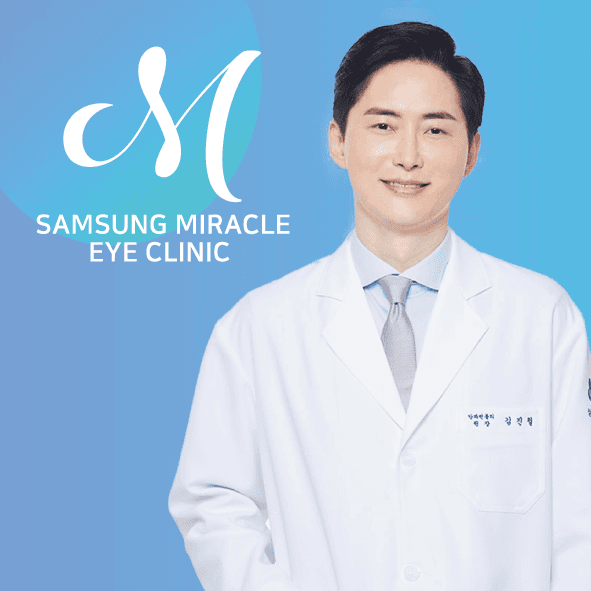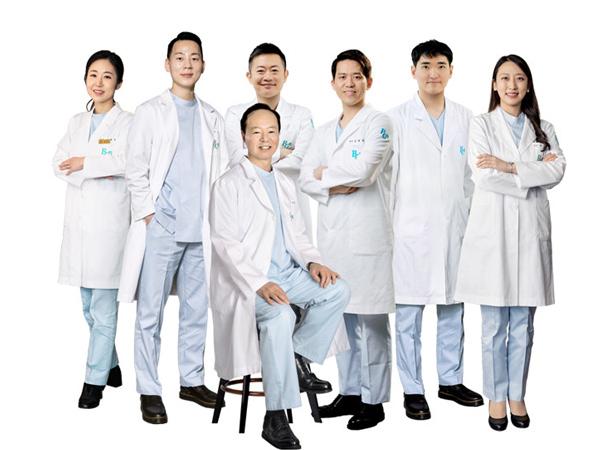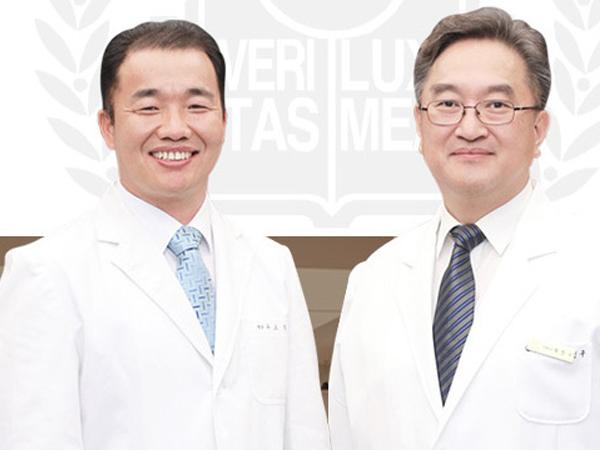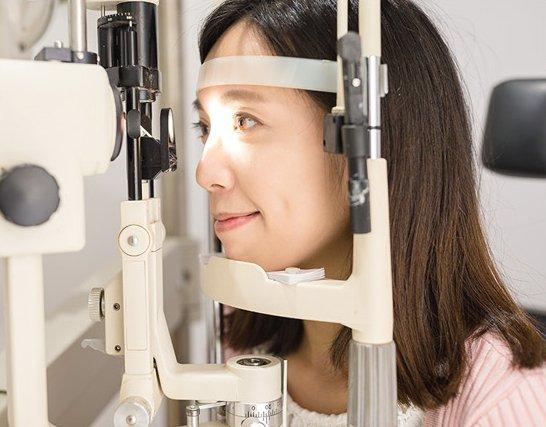Medical Tourism Blog
LASIK in Korea | Best Clinics, Costs, Procedure Types & More
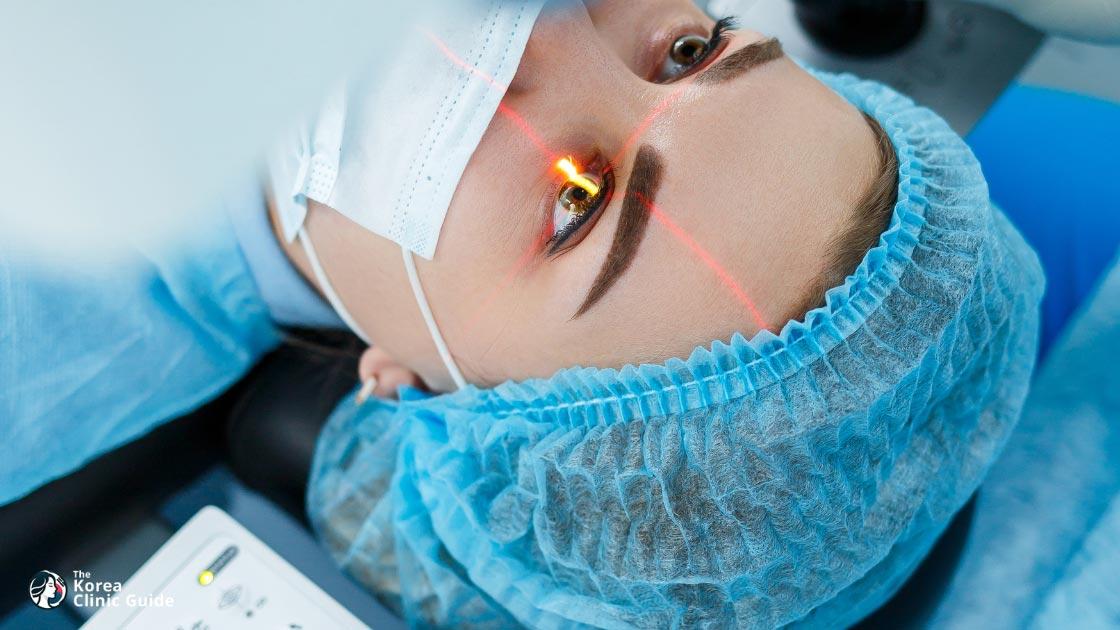
Table of contents
- What Is LASIK?
- Best Clinics in Korea for Lasik
- Getting LASIK in Korea
- Cost of LASIK in Korea
- Alternatives to LASIK
- Conclusion
Considering treatment in Korea? Everything you need to know e.g. — how to avoid scams, visas, interpreters, recovery tips — in our Medical Tourism Master Guide. Plan with confidence in minutes, not weeks!
Imagine waking up with perfectly clear vision and no longer depending on glasses or contact lenses—this life-changing freedom is what LASIK, or laser-assisted in situ keratomileusis, offers to millions worldwide. South Korea has emerged as a premier destination for this advanced refractive eye surgery, boasting cutting-edge technology and skilled ophthalmologists who ensure that each procedure is both effective and accessible.
What Is LASIK?
LASIK, or Laser-Assisted In Situ Keratomileusis, is a popular and advanced procedure used to correct various vision problems, such as myopia (nearsightedness), hyperopia (farsightedness), and astigmatism. This refractive surgery aims to reduce or eliminate the dependency on glasses or contact lenses by reshaping the cornea, the eye's clear front surface.
Here’s a detailed overview of what the LASIK procedure involves:
Pre-Surgery Evaluation
Before undergoing the LASIK procedure, patients must go through a thorough eye examination to determine their suitability. This involves measuring the thickness of the cornea, mapping out the corneal surface using topography, and checking pupil size in different lighting conditions. Optical coherence tomography (OCT) might be employed to get detailed images of the eye's anatomy. The ophthalmologist will also assess the patient's health history and discuss their expectations to ensure realistic outcomes.
The LASIK Procedure
-
Preparation: On the day of the surgery, anesthetic eye drops are applied to the patient’s eyes to numb the area and prevent discomfort during the procedure.
-
Creation of the Corneal Flap: Using either a microkeratome (a precise surgical tool) or a femtosecond laser, a thin flap is created in the cornea. This flap is lifted to expose the underlying corneal tissue that needs reshaping.
-
Corneal Reshaping: An excimer laser, which is a cool ultraviolet light beam, is used to meticulously remove microscopic amounts of corneal tissue. This reshaping process helps to refocus light entering the eye precisely onto the retina, enhancing vision quality. The specific areas and amount of tissue removed are calculated based on the pre-surgery measurements and the individual’s refractive error.
-
Repositioning the Flap: After the cornea is reshaped, the flap is carefully repositioned onto the corneal surface, where it adheres naturally without the need for stitches due to the cornea’s natural bonding properties.
Post-Surgery Care
Post-operative care is essential for a successful recovery. Patients are usually prescribed antibiotic and anti-inflammatory eye drops to prevent infection and manage inflammation. Mild discomfort, dryness, and blurry vision may be experienced briefly post-surgery but typically subside within a few days. It is important to follow the ophthalmologist’s guidelines, which may include avoiding strenuous activities, refraining from rubbing the eyes, and attending follow-up appointments to monitor the healing process.
Effectiveness and Considerations
LASIK has a high success rate, with many patients achieving 20/20 vision or better following the procedure. However, like any surgical intervention, LASIK carries certain risks, including dry eyes, glare, halos around lights, and possible undercorrections or overcorrections. It is crucial for patients to thoroughly discuss these potential risks and benefits with their ophthalmologist during the pre-surgery consultation.
By understanding the LASIK procedure in detail, individuals considering this surgery can make informed decisions and prepare adequately for the life-changing benefits of improved vision.
Who is LASIK for?
- Nearsightedness (Myopia): Individuals with a slightly longer than average eyeball or overly curved cornea benefit as LASIK helps focus light precisely on the retina rather than in front of it, reducing distant vision blurriness.
- Farsightedness (Hyperopia): People with a shorter than average eyeball or a flatter cornea experience improved vision as LASIK helps focus light directly on the retina instead of behind it, enhancing near and potentially distant vision.
- Astigmatism: Those with an unevenly curved or flattened cornea gain clearer vision as LASIK corrects the irregularities affecting both near and distant focus.
- Eyewear Alternative: Individuals looking to reduce or eliminate dependence on glasses or contact lenses may find LASIK a viable option to achieve clearer vision without the need for corrective eyewear.
- Stable Vision Prescription: People whose vision prescription has been stable for at least a year, ensuring that their refractive error is not likely to change shortly after the surgery.
- Appropriate Corneal Thickness: Candidates must have sufficiently thick and healthy corneas, as the procedure involves reshaping the corneal tissue.
- Overall Eye and Health Condition: Ideal candidates have no history of eye infections, dry eyes, or eye diseases like glaucoma or cataracts and do not have autoimmune disorders that could affect healing.
Individuals considering LASIK should consult with their eye doctor to determine if they are suitable candidates based on these criteria.
Best Clinics in Korea for Lasik
Listed below are the best clinics in Korea for lasik:
| Clinic Name | Key Features | Special Techniques |
|---|---|---|
| Samsung Miracle Eye Clinic Website | Samsung Miracle Eye Clinic, located at Gangnam Station, is a leading destination for LASIK and comprehensive vision care in Korea, uniting advanced technology with true 1:1 personalized care. Every patient receives a tailored consultation and customized surgical plan, and—unlike many clinics—the same doctor who examines your eyes performs your surgery and oversees your entire recovery, ensuring consistency, accountability, and optimal results. With an in-house diagnostic system and a patented Miracle Formula for precise lens power calculation, the clinic’s one-day system enables both diagnosis and surgery on the same day without compromising accuracy. All surgeons are ambidextrous, operating with equal precision in both eyes to ensure symmetry and minimize nasal bridge contact for enhanced safety and comfort. A dedicated International Patient Team provides seamless support so global patients receive the same quality, convenience, and outcomes-focused care. Why Samsung Miracle Eye Clinic is the best choice for LASIK: - True 1:1 personalized care with surgeon continuity from exam through recovery - Same-day diagnosis-to-surgery one-day system for maximum convenience and precision - Ambidextrous surgeons for perfectly balanced, symmetrical results and improved safety - Advanced technology and rigorously standardized protocols aimed at optimal outcomes - Dedicated International Patient Team for smooth, stress-free care and communication - Comprehensive services under one roof: SMILE LASIK, LASIK/LASEK; presbyopia and cataract treatments including intraocular lens insertion; dry eye syndrome treatment; Dream Lens (orthokeratology); and re-calibration surgery for prior vision corrections - Prime Gangnam Station location with easy access and a team of highly professional medical experts | - SMILE LASIK - LASIK/LASEK - Presbynia and cataract treatments including intraocular lens insertion - Dry eye syndrome treatment - Dream Lens (orthokeratology) - Re-calibration surgery for prior vision corrections |
| BnVIIT Eye Clinic Website | B&VIIT Eye Center is a premier ophthalmology clinic in Gangnam, Korea, with over 30 years of experience and a track record of 550,000 successful eye surgeries. Renowned for its cutting-edge A.I. Vision Correction Prediction System, the center emphasizes precision, safety, and personalization—making it a leading destination for patients considering LASIK and other refractive solutions in Korea. Beyond all-laser LASIK, B&VIIT offers a comprehensive range of vision correction options, including SMILE and all-laser LASEK (PRK), as well as phakic intraocular lenses (PIOL) for those who are not ideal candidates for laser procedures. The clinic also provides cataract surgery with intraocular lens implantation, orthokeratology (Ortho-K) lenses for non-surgical daytime clarity, and fully customized treatment plans tailored to each patient’s visual needs and lifestyle. Find more about this clinic here: BnVIIT Eye Clinic Website | - A.I. Vision Correction Prediction System - SMILE - all-laser LASEK (PRK) - phakic intraocular lenses (PIOL) - cataract surgery with intraocular lens implantation - orthokeratology (Ortho-K) - fully customized treatment plans tailored to each patient’s visual needs and lifestyle |
| BGN Eye Clinic Jamsil Website | BGN Eye Clinic Jamsil is a premier eye care center in Korea offering cutting-edge solutions for vision correction, from laser procedures to lens-based options. For corneal laser surgery, patients can choose among SMILE, a minimally invasive procedure for myopia and astigmatism; SMILE PRO, an advanced iteration of SMILE offering greater precision and faster recovery; LASIK, which uses a laser to reshape the cornea to correct myopia, hyperopia, and astigmatism; and LASEK, a close alternative to LASIK suitable for thinner corneas. Beyond lasers, the clinic provides Implantable Collamer Lens (ICL) surgery to correct high degrees of myopia and astigmatism, especially for those with thin corneas, as well as cataract surgery with monofocal intraocular lenses for distance vision and presbyopia surgery with multifocal lenses for better near and distance focus. Detailed pre- and post-surgery instructions support safety and effectiveness, and the clinic’s range of procedures allows care to be tailored to each patient’s specific needs. Find more about this clinic here: BGN Eye Clinic Jamsil Website | - SMILE - SMILE PRO - LASIK - LASEK - Implantable Collamer Lens (ICL) surgery - cataract surgery with monofocal intraocular lenses - presbyopia surgery with multifocal lenses |
Samsung Miracle Eye Clinic
Samsung Miracle Eye Clinic, located at Gangnam Station, is a leading destination for LASIK and comprehensive vision care in Korea, uniting advanced technology with true 1:1 personalized care. Every patient receives a tailored consultation and customized surgical plan, and—unlike many clinics—the same doctor who examines your eyes performs your surgery and oversees your entire recovery, ensuring consistency, accountability, and optimal results. With an in-house diagnostic system and a patented Miracle Formula for precise lens power calculation, the clinic’s one-day system enables both diagnosis and surgery on the same day without compromising accuracy. All surgeons are ambidextrous, operating with equal precision in both eyes to ensure symmetry and minimize nasal bridge contact for enhanced safety and comfort. A dedicated International Patient Team provides seamless support so global patients receive the same quality, convenience, and outcomes-focused care.
Why Samsung Miracle Eye Clinic is the best choice for LASIK:
- True 1:1 personalized care with surgeon continuity from exam through recovery
- Same-day diagnosis-to-surgery one-day system for maximum convenience and precision
- Ambidextrous surgeons for perfectly balanced, symmetrical results and improved safety
- Advanced technology and rigorously standardized protocols aimed at optimal outcomes
- Dedicated International Patient Team for smooth, stress-free care and communication
- Comprehensive services under one roof: SMILE LASIK, LASIK/LASEK; presbyopia and cataract treatments including intraocular lens insertion; dry eye syndrome treatment; Dream Lens (orthokeratology); and re-calibration surgery for prior vision corrections
- Prime Gangnam Station location with easy access and a team of highly professional medical experts
You can check out their website here: Samsung Miracle Eye Clinic Website
BnVIIT Eye Clinic
B&VIIT Eye Center is a premier ophthalmology clinic in Gangnam, Korea, with over 30 years of experience and a track record of 550,000 successful eye surgeries. Renowned for its cutting-edge A.I. Vision Correction Prediction System, the center emphasizes precision, safety, and personalization—making it a leading destination for patients considering LASIK and other refractive solutions in Korea.
Beyond all-laser LASIK, B&VIIT offers a comprehensive range of vision correction options, including SMILE and all-laser LASEK (PRK), as well as phakic intraocular lenses (PIOL) for those who are not ideal candidates for laser procedures. The clinic also provides cataract surgery with intraocular lens implantation, orthokeratology (Ortho-K) lenses for non-surgical daytime clarity, and fully customized treatment plans tailored to each patient’s visual needs and lifestyle.
Find more about this clinic here: BnVIIT Eye Clinic Website
BGN Eye Clinic Jamsil
BGN Eye Clinic Jamsil is a premier eye care center in Korea offering cutting-edge solutions for vision correction, from laser procedures to lens-based options. For corneal laser surgery, patients can choose among SMILE, a minimally invasive procedure for myopia and astigmatism; SMILE PRO, an advanced iteration of SMILE offering greater precision and faster recovery; LASIK, which uses a laser to reshape the cornea to correct myopia, hyperopia, and astigmatism; and LASEK, a close alternative to LASIK suitable for thinner corneas.
Beyond lasers, the clinic provides Implantable Collamer Lens (ICL) surgery to correct high degrees of myopia and astigmatism, especially for those with thin corneas, as well as cataract surgery with monofocal intraocular lenses for distance vision and presbyopia surgery with multifocal lenses for better near and distance focus. Detailed pre- and post-surgery instructions support safety and effectiveness, and the clinic’s range of procedures allows care to be tailored to each patient’s specific needs.
Find more about this clinic here: BGN Eye Clinic Jamsil Website
Getting LASIK in Korea
Laser-Assisted In Situ Keratomileusis (LASIK) is a popular elective surgical procedure designed to correct refractive vision problems such as myopia (nearsightedness), hyperopia (farsightedness), and astigmatism. Korea is renowned for its advanced medical technology and highly skilled ophthalmologists, making it an attractive destination for individuals considering LASIK surgery.
Pre-Procedure Evaluation
Before undergoing LASIK in Korea, patients must undergo a comprehensive eye examination. This evaluation typically includes:
- Corneal Topography: A mapping of the cornea’s surface curvature to detect irregularities.
- Pupil Measurement: Determining the size of the pupils under different lighting conditions.
- Wavefront Analysis: Assessing how light travels through the eye to identify aberrations.
- Visual Acuity Testing: Measuring the current level of visual clarity.
- Medical History Review: An assessment of the patient's overall health and any conditions that may affect eye health.
Choosing a LASIK Clinic

Korea is home to numerous reputable clinics and hospitals that specialize in LASIK. Many of these institutions are equipped with state-of-the-art technology and adhere to strict safety protocols. When selecting a clinic, patients should consider:
- Credentials of the Surgeon: Ensuring that the ophthalmologist has extensive experience and board certification.
- Technology Utilized: Checking if the clinic uses advanced excimer and femtosecond laser machines.
- Patient Reviews: Reading testimonials or reviews from previous patients to gauge satisfaction and outcomes.
- Consultation Availability: Opting for clinics that offer detailed pre-operative consultations to address concerns and outline the procedure.
The LASIK Procedure
The LASIK surgery in Korea is performed in several precise steps:
- Anesthetic Eye Drops: To numb the eye, ensuring the procedure is pain-free.
- Creation of the Corneal Flap: Using a femtosecond laser or a microkeratome, the surgeon creates a thin flap on the cornea’s surface.
- Reshaping the Cornea: The excimer laser is used to remove corneal tissue, reshaping it to correct the refractive error. This is guided by the pre-operative mapping and wavefront data.
- Repositioning the Flap: Once the cornea is reshaped, the flap is repositioned. It adheres naturally without the need for stitches.
Post-Procedure Care
After the surgery, patients are provided with guidelines to ensure proper healing:
- Follow-Up Appointments: Scheduled visits to monitor the healing process and detect any complications.
- Medication: Prescribed antibiotic and anti-inflammatory eye drops to prevent infection and reduce inflammation.
- Activity Restrictions: Recommendations to avoid activities that could strain or impact the eyes, such as heavy lifting and swimming, for a specified period.
- Protective Eyewear: Usage of sunglasses and protective goggles to shield the eyes from bright light and physical impact.
Benefits and Risks
Choosing to have LASIK in Korea comes with several benefits including access to advanced technology, experienced surgeons, and often more affordable costs compared to Western countries. However, like any surgical procedure, LASIK also carries risks such as dry eyes, glare, and in rare cases, complications requiring further treatment.
Patients are encouraged to discuss all potential outcomes with their ophthalmologist to make an informed decision about whether LASIK is the right option for their vision correction needs.
| Procedure Price | Korean Won (₩) | USD ($) |
|---|---|---|
| Low Price | ₩1,700,000 | $1200 |
| High Price | ₩2,500,000 | $1800 |
Exchange rate as of 2025-05-22: 1 KRW = 0.0007 USD
Please note that these prices are approximate guidelines and can vary significantly based on the clinic and your individual circumstances.
Cost of LASIK in Korea
When considering LASIK eye surgery, cost is a significant factor that potential patients evaluate. The price of LASIK varies across different countries, including Korea and the USA.
In South Korea, LASIK surgery is notably affordable compared to many Western nations. On average, the cost of LASIK in Korea ranges from $1,000 to $2,200 per eye. This price is relatively low due to the country's advanced medical infrastructure, high competition among numerous clinics, and lower operational costs.
In contrast, the cost of LASIK in the United States is considerably higher. On average, patients can expect to pay between $2,000 and $3,500 per eye. This higher cost in the USA is attributed to various factors, such as the high cost of living, expensive healthcare services, and the regulatory requirements that American clinics must follow.
Other countries have varying LASIK costs as well. For example:
- Canada: The cost of LASIK in Canada typically ranges from $1,500 to $3,000 per eye.
- United Kingdom: The price in the UK can vary between £1,200 and £2,800 per eye, which is approximately $1,500 to $3,500 in USD.
- Australia: Australian clinics often charge between AUD 2,500 and AUD 4,000 per eye, equivalent to roughly $1,800 to $2,900 in USD.
- India: LASIK is considerably cheaper in India, with prices ranging from $400 to $1,000 per eye due to lower medical expenses and high competition.
While price is an essential aspect, it's equally important to consider factors such as the reputation of the clinic, the technology used, and the surgeon's expertise when deciding on LASIK surgery.
Alternatives to LASIK
While LASIK is the most well-known laser refractive surgery for correcting vision issues, it may not be suitable for everyone due to certain health conditions, corneal irregularities, or personal preferences. Fortunately, there are alternative procedures that can offer similar benefits. Here are three popular alternatives to LASIK:
1. Photorefractive Keratectomy (PRK)
Photorefractive Keratectomy (PRK) is the original form of laser eye surgery that preceded LASIK. Unlike LASIK, which involves creating a flap in the cornea, PRK works by entirely removing the cornea’s outer layer (epithelium) to expose the corneal tissue to be reshaped.
Procedure Steps:
- The outer layer of the cornea is gently removed.
- An excimer laser reshapes the cornea to correct the refractive error.
- A protective contact lens is placed over the cornea to aid in healing.
Advantages and Considerations:
- PRK is less likely to weaken the cornea, making it suitable for individuals with thin corneas.
- The absence of a corneal flap eliminates flap-related complications.
- The recovery time is longer than LASIK, often taking several days to a week for the epithelium to regenerate.
- Postoperative discomfort may be slightly more pronounced due to the removal of the corneal surface.
2. Small Incision Lenticule Extraction (SMILE)
Small Incision Lenticule Extraction (SMILE) is a newer type of minimally invasive laser eye surgery. It is particularly beneficial for patients with high levels of nearsightedness.
Procedure Steps:
- A femtosecond laser is used to create a small, disc-shaped piece of tissue (lenticule) within the cornea.
- A small incision is made in the cornea.
- The lenticule is removed through the small incision, reshaping the cornea to correct vision.
Advantages and Considerations:
- SMILE involves a single laser and fewer steps, reducing the risk of dry eyes compared to LASIK.
- The surgery preserves the corneal surface more effectively, resulting in potentially less postoperative discomfort and faster functional recovery.
- It offers a solution for patients with high myopia who may not be ideal candidates for LASIK.
- Though relatively new, it has shown promising results for specific refractive errors but may not address hyperopia (farsightedness).
3. Implantable Collamer Lens (ICL)
Implantable Collamer Lens (ICL) provides an alternative for individuals who are not suitable candidates for laser eye surgeries due to thin corneas or severe refractive errors. Unlike laser procedures, ICL involves placing a corrective lens inside the eye.
Procedure Steps:
- A small incision is made at the junction of the cornea and sclera.
- The collamer lens, tailored to the patient's refractive needs, is implanted in front of the eye’s natural lens.
- The lens corrects the refractive error, ensuring improved vision.
Advantages and Considerations:
- ICL is reversible, and the lens can be removed if necessary.
- It provides excellent vision correction for high levels of myopia, hyperopia, and astigmatism.
- The procedure maintains the corneal integrity, making it suitable for individuals with thin or irregular corneas.
- Being a more invasive procedure, it comes with risks similar to those of other intraocular surgeries, such as cataract formation and infection.
Before deciding on any refractive surgery, it's essential to consult with an eye care specialist to determine the most appropriate option based on your specific vision needs, eye health, and lifestyle.
Conclusion
In conclusion, LASIK surgery in Korea stands out as a compelling option for those seeking top-tier vision correction owing to its advanced technological infrastructure, highly skilled ophthalmologists, and overall affordability. With a strong emphasis on patient safety and satisfaction, along with convenient access to post-operative care, Korea has become a global hub for high-quality laser eye surgeries. Whether you're a local resident or an international medical tourist, the comprehensive LASIK services available in Korea offer a promising solution to a life free from glasses and contact lenses. Exploring this option could be the first step towards achieving clear vision and improved quality of life.
